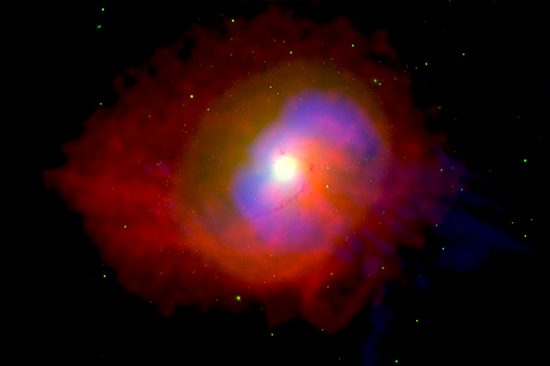
Jan 9, 2019
Plasma is electrically ionized.
In plasmas, thermal and other energy sources strip electrons from atomic nuclei. When excess charge develops in various regions, due to gravity or other influences, electric discharges can take place, forming electromagnetic sheaths along the discharge axes. If there is enough charge flow, the sheaths will glow; sometimes forming other sheaths. Those regions of isolated charge, or “cells”, are known as double layers.
Double layers induce electric fields, which can accelerate charged particles. When electric charge spirals in an electromagnetic field, X-rays, extreme ultraviolet, and sometimes gamma rays are emitted. Those electromagnetic forces create conductive channels called Birkeland currents: filaments that tend to attract each other in pairs. The electric fields that form along plasma strands can generate an attractive force orders of magnitude greater than gravity. Although, due to their isolated sheaths, instead of merging, Birkeland currents twist into helixes that rotates faster as they compress.
The cosmos is interlaced with electric circuits made up of energized Birkeland current filaments at every scale. At the largest scale, there are loads in the circuits converting electrical energy into rotation. They are called, “galaxies”.
Electric Universe advocates see galactic evolution in terms of large-scale plasma discharges that form those coherent filaments. Why stars in galaxies tend to coalesce in long arcs like bright beads on a line is one of a hundred mysteries that conventional cosmology must confront. What is seen within the barred spirals and elliptical whirlpools that congregate in million-light-year clusters continues to elude explanation.
Plasma physics fits observations and behaviors better than kinetics or gravity. As previously written, plasma is not a substance, it is an emergent phenomenon, so it can not be analyzed in terms of its component parts, it arises in response to complicated interactions.
The filaments of electric charge that move in closed circuits through plasma can attract matter to them over vast distances. Double layers might glow in visible or infrared light. However, plasma might also initiate dark discharges. Perhaps those are the filamentary “dark lanes” seen by astronomers. Electric Universe advocates have long known that “radio lobes” far above the poles of active galaxies are the signature of Birkeland currents, while the spiral arms of some galaxies exhibit dark, twisted strands of material extending from their cores.
It is becoming increasingly obvious that the Milky Way shares characteristics with the rest of its galactic family. Its halo of stars, its filamentary structures, lobes of radiation, its microwave haze, and other observed phenomena point to its electrical nature.
Stephen Smith












